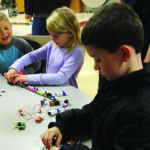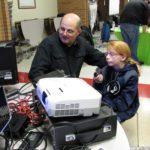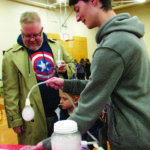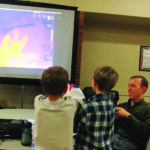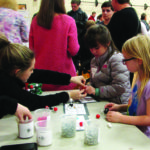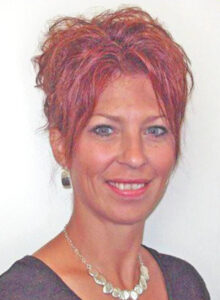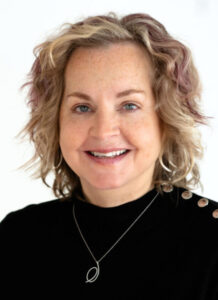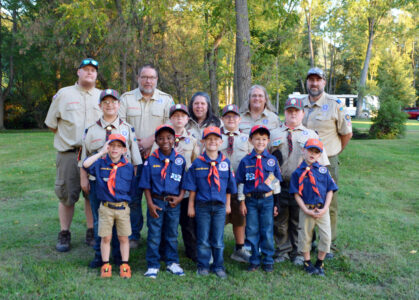Exploration-U held for kids, families in Bellefonte area schools
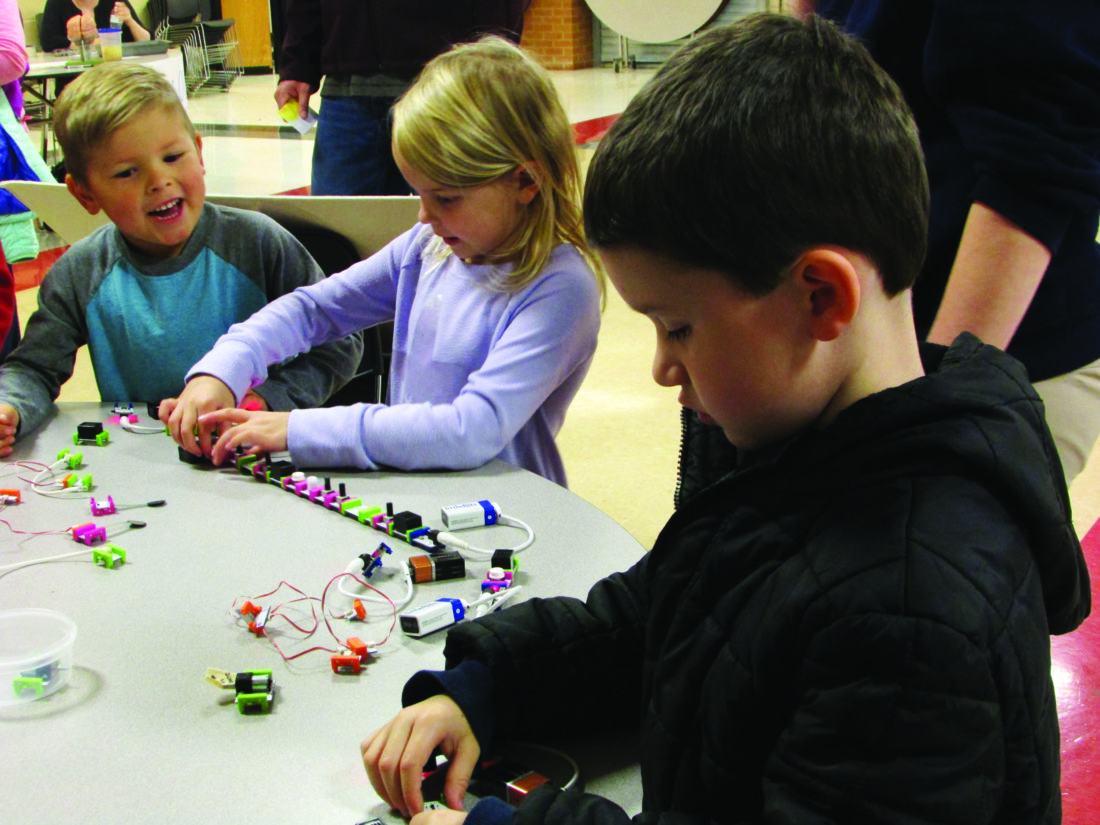
Jack Dickinson, left, Ellie Dickinson and Harvey Maddox have fun with their littleBits creations.
- Jack Dickinson, left, Ellie Dickinson and Harvey Maddox have fun with their littleBits creations.
- Jon Guizar assists sixth grader Ashleigh Aukerman as she tries out a ham radio.
- William Osman and his son Timothy watch as Penn State junior Cameron Long demonstrates how to create a bubble. EMMA GOSALVEZ/THE EXPRESS
- EMMA GOSALVEZ/THE EXPRESS Kevin Luhman, a professor of astronomy at Penn State, shows Caleb Bassett, left, and Jordan Fausey how infrared heat detection works.
- Lindsey Dillon helps Hannah Sampsel and Whisper Martin create “molecules.”
Bellefonte Area School District, partnering with the Penn State Science Outreach Center, has definitely realized this and continues to attract the young and old alike for its annual Exploration-U: Bellefonte Family Science Night. The event was held from 6 to 8 p.m. on Tuesday, Nov. 14, and showcased between 40 to 50 projects in the high school cafeteria and gymnasium.
This year, one new addition was that one which showcased amateur radio operator equipment. But this was just a look into something much bigger.
According to amateur radio operator and district school board member Jon Guizar, about 10 to 11 Bellefonte middle school students in the first half of next year will have the opportunity to talk to an astronaut as the astronaut flies overhead the school.
This is all part of a program called Amateur Radio on the International Space Station (ARISS), which was created to inspire both youth and adults to pursue careers in science, technology, engineering, and math, also known as STEM. Guizar is helping coordinate the program within the Bellefonte Area School District.
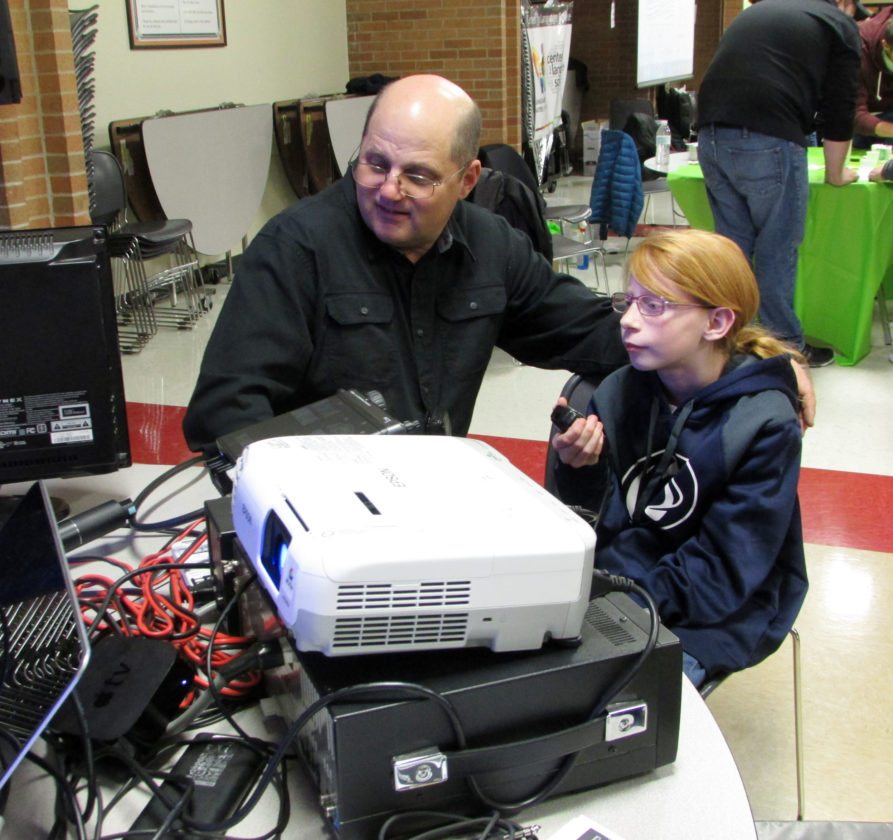
Jon Guizar assists sixth grader Ashleigh Aukerman as she tries out a ham radio.
“In the beginning, the amateur radio aboard the space station was put up there as a means of backup communication,” Guizar explained. “The beauty of amateur radio is you don’t depend on anyone else for anything — you have your own station and if yours goes down for some reason, there’s somebody next to you, so to speak.”
But amateur radio has changed from the days of using it for emergency communications.
“Now, they use it as an educational outreach to give students the chance to have an event that they will pretty much remember for a lifetime, being able to talk to an astronaut as they fly overhead at 18,000 miles an hour,” Guizar said.
Guizar said that the program will be primarily at the middle school, but the hope is to get everyone in the district involved.
In science classes, students will get to learn about orbital mechanics and the radio frequency spectrum. Other space-related topics will be discussed throughout the science and math curriculum. Guizar said he hopes to involve art classes, where students can possibly design related artwork for T-shirts that students can wear.
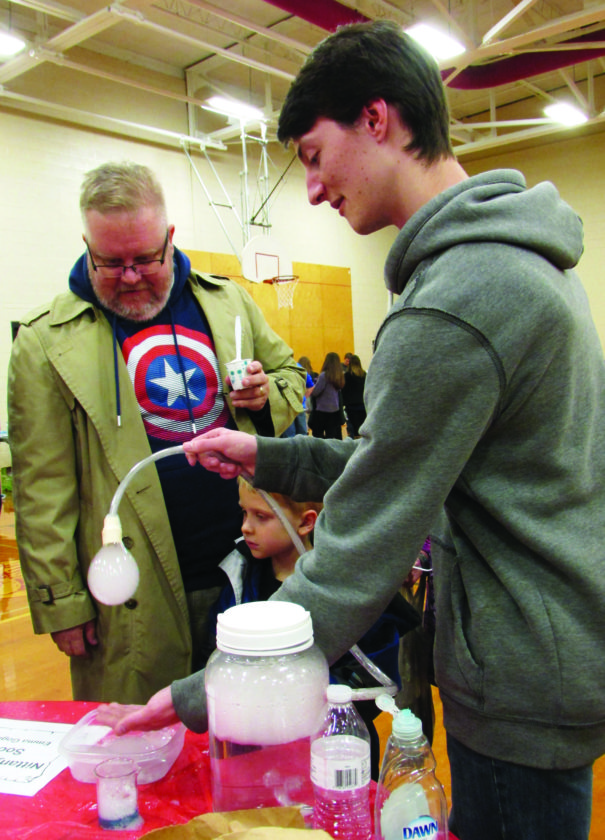
William Osman and his son Timothy watch as Penn State junior Cameron Long demonstrates how to create a bubble. EMMA GOSALVEZ/THE EXPRESS
Another exhibit that excited students was one manned by Penn State professor of astronomy and astrophysics Kevin Luhman, who brought an infrared camera for demonstration.
Luhman explained, “It shows infrared wavelengths that our eyes cannot see. In infrared, hot things appear bright and cold things appear dark.”
He uses the camera in his classes at Penn State, where he teaches students about light and how it works. He said astronomers often use such infrared cameras on telescopes so that they can see things in space that are really cold and can glow only in infrared.
Another project students enjoyed was the creation of Dippin’ Dots with liquid nitrogen. Students from the Nittany Chemical Society, the Penn State student affiliate chapter of the American Chemical Society, demonstrated a variety of other things, such as the creation of more dense bubbles and the use of diaper polymer to create a gooey, slimy substance.
“It’s actually what’s inside a baby’s diaper: you add water to it, and polymers are really big molecules,” said Penn State junior Laura Velazquez. “It absorbs much more than what it seems, so it will expand and create five times its volume.”
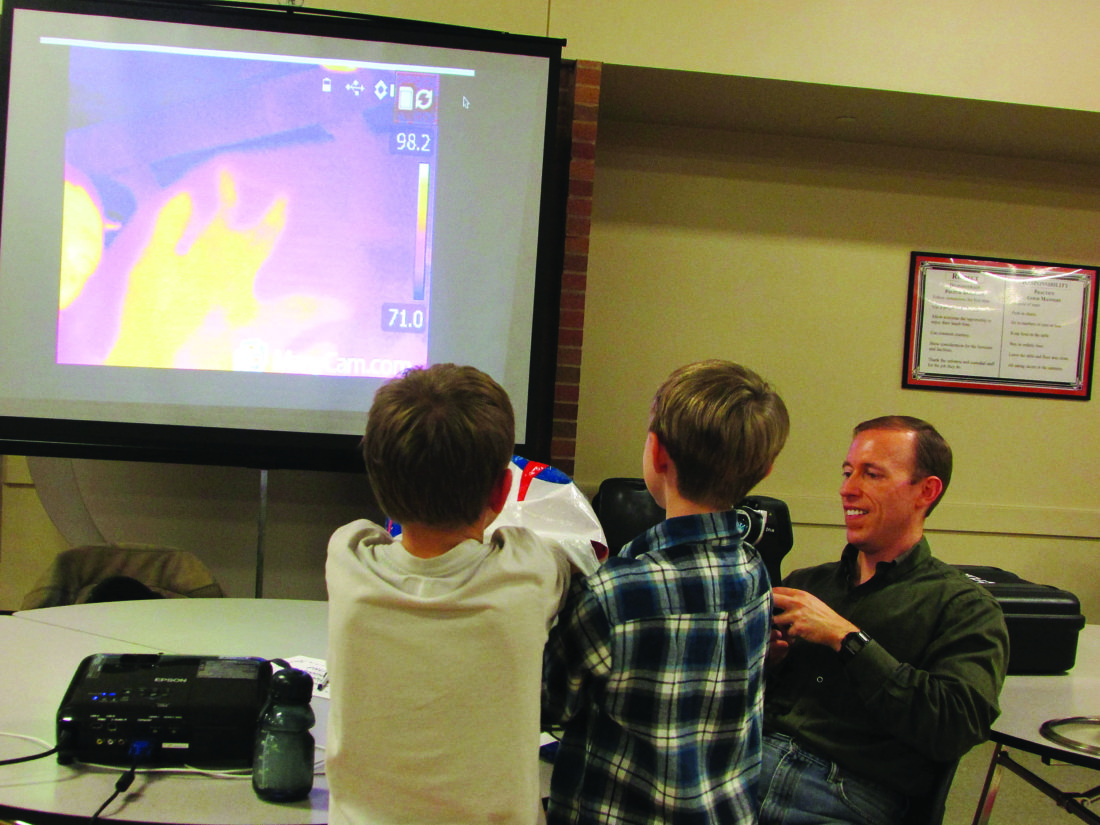
EMMA GOSALVEZ/THE EXPRESS Kevin Luhman, a professor of astronomy at Penn State, shows Caleb Bassett, left, and Jordan Fausey how infrared heat detection works.
The Exploration-U community science night has been held for the Bellefonte Area School District for more than 10 years. For more information about the Exploration-U program, visit www.science.psu.edu/outreach/exploration-u.
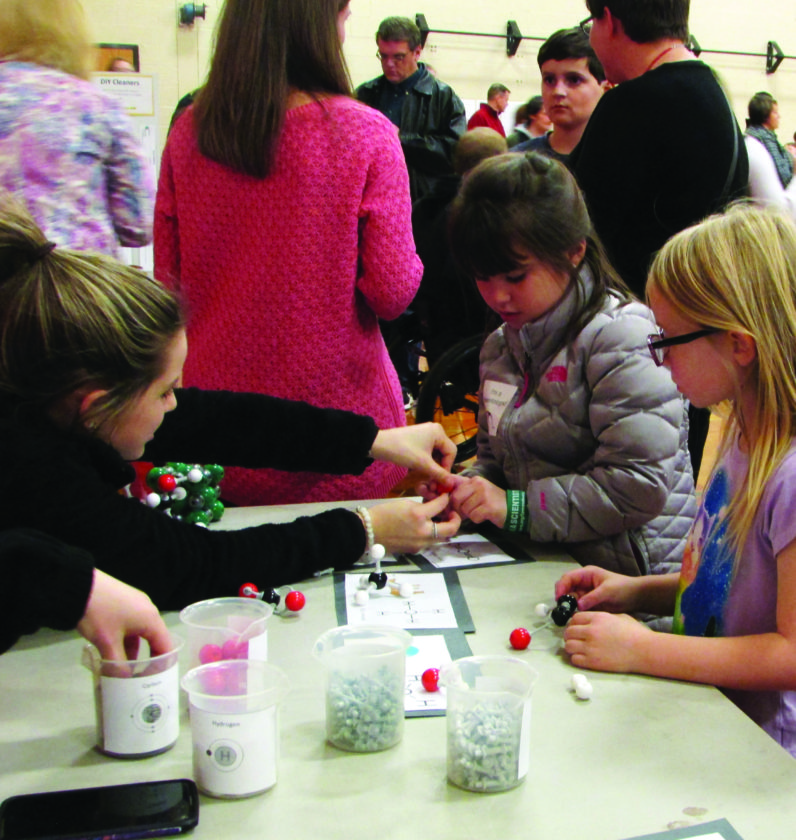
Lindsey Dillon helps Hannah Sampsel and Whisper Martin create “molecules.”

